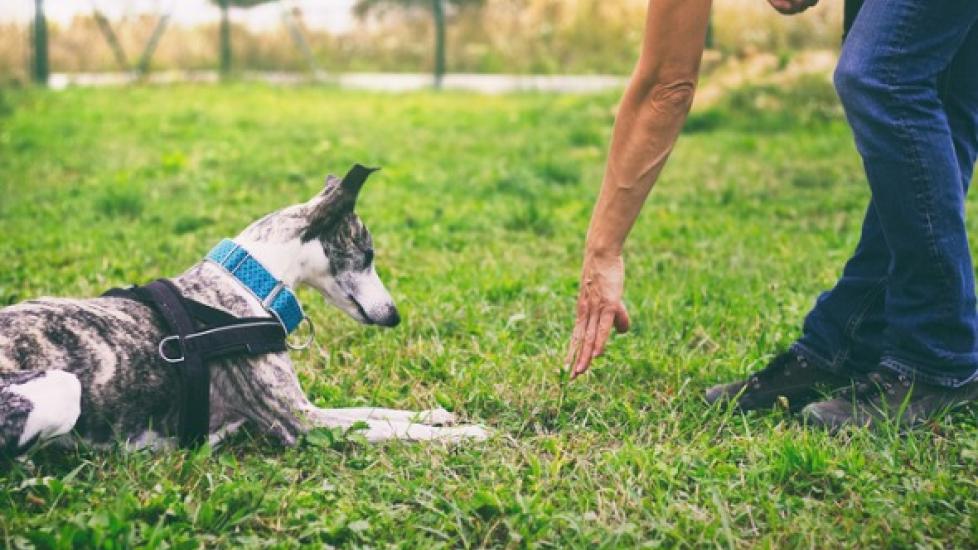Title: 4 Hand Signals for Dogs That You Can Teach Your Pup
Subheading: Unleashing the Power of Communication with Fido
Introduction:
In the world of human-canine interaction, communication is key. While verbal commands are undoubtedly effective, hand signals can be a game-changer when it comes to training and interacting with your furry friend. Not only do they provide an alternative mode of instruction, but they also enhance a dog’s cognitive abilities by expanding their understanding of our gestures. Here are four fundamental hand signals that you can start teaching your pup today!
Hand Signal #1: Sit
Description: The “Sit” command is often one of the first things we teach our dogs, and using a hand signal can make it even more intuitive. To execute this signal, hold your palm facing downwards at waist level. As soon as your dog sits, praise them enthusiastically or reward them with treats.
Training Tip: Begin by holding the treat in front of your dog’s nose and slowly raising it above their head while saying “Sit.” When they begin to sit, quickly bring the treat back down so they associate the motion with the action. Gradually reduce the use of treats over time to solidify the behavior.
Hand Signal #2: Stay
Description: A crucial element in leash training, the “Stay” command keeps your dog rooted in place until you release them. To indicate “Stay,” point your index finger towards your dog and extend your arm out straight. Keep your other fingers closed to create a clear visual cue.
Training Tip: Start by practicing “Sit” and then gradually increase the duration of the command. Once your dog understands “Sit,” add the hand signal and say “Stay.” If your dog gets up before you give the release command (often just their name), guide them back into position without scolding them. Consistency is key.
Hand Signal #3: Come
Description: Teaching your dog to come on command is essential for safety reasons alone. For the hand signal, form a fist and wave it gently from side to side. This mimics the waving movement used during playtime, which dogs find naturally enticing.
Training Tip: Make sure to reinforce the word “Come” consistently whenever you call your dog, regardless if you’re using the hand signal or not. Use high-value rewards like favorite toys or extra-tasty snacks to motivate them. Practice indoors initially where distractions are minimal, and gradually progress outdoors.
Hand Signal #4: Down
Description: Encouraging your dog to lie down can prevent exhaustion and muscle strain, especially after an energetic activity session. Hold both hands together in front of you, palms facing each other, and lower them slowly towards the ground. This indicates to your dog that they should follow suit.
Training Tip: Similar to “Sit,” start by luring your dog into the down position with a treat. Once they understand what you want, incorporate the hand signal along with the verbal command. Be patient; some dogs may find lying down less instinctive than sitting. Reward every attempt, no matter how small.
Conclusion:
By incorporating these simple yet powerful hand signals into your daily routine, you’ll strengthen the bond between you and your pet, promote obedience, and ensure a harmonious life together. Remember, consistency and positive reinforcement are the cornerstones of successful training. So go ahead, get creative with your hand signals, and watch your dog flourish under this enhanced system of communication!
